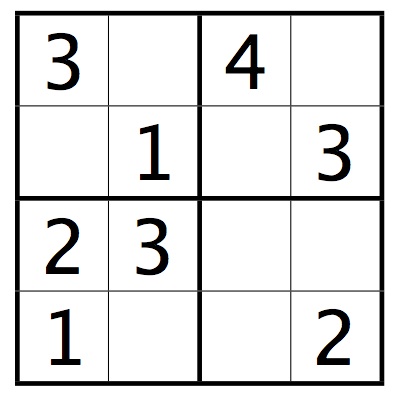
In the lecture we wrote a function that prints all subsets of {1, ..., N} using a prefix parameter. Rewrite this function using any of the other 3 techniques that we used for solving the abc problem.
Write a function void
permutations(string s) that prints all permutations of a
string. For example, permutations("cat")
might print
cat cta act atc tca tac
Write a function IEnumerable<string>
permutations(string s) that returns a sequence of all
permutations of a string. Use a recursive iterator function that
yields the solutions.
Write a function void
combinations(int[] a, int k) that takes an array a and an
integer k, and prints
all combinations of k elements of a. For example, the call
int[] a = { 2, 4, 6, 8, 10};
combinations(a, 3);might produce this output:
2 4 6 2 4 8 2 4 10 2 6 8 2 6 10 2 8 10 4 6 8 4 6 10 4 8 10 6 8 10
A composition of a non-negative integer n is a sequence of positive integers that add up to N. Order matters: 1 + 3 and 3 + 1 are different compositions of 4.
a) Write a function compositions(n) that prints
all compositions of an integer n. For example, compositions(3)
will print (in some order):
1 + 1 + 1 1 + 2 2 + 1 3
b) Find an algebraic formula that expresses how many compositions of any integer N exist, as a function of N.
Write a function IEnumerable<int>
only_even(IEnumerable<int> seq) that takes a sequence
seq of integers and returns another
sequence containing only the even integers from seq.
A student is walking up a staircase that contains N stairs. On each step, the student may walk up either 1, 2, or 3 stairs. Write a program that reads N and prints out all possible ways that exist to climb the stairs in this fashion.
Using the N queens function from the lecture notes, write a C# program that measures how many milliseconds it takes to find a solution to the problem for all values of N in the range from 4 to 26. Write this timing information to a file, and then graph it using Python and matplotlib.
A mini-Sudoku puzzle looks like this:

To solve the puzzle, you must place a number from 1 to 4 in every square so that the numbers in every row, column, and mini-square are distinct.
Write a method that reads a mini-Sudoku puzzle from standard input. Empty squares will be represented by the number 0:
3040 0103 2300 1002
The method should print out a solution to the puzzle if it can find one, otherwise null.